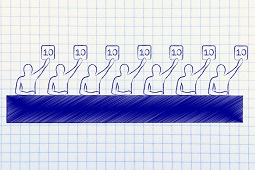Review Processes
REVIEW PRINCIPLES
Based on its values CERR facilitates rigorous and extensive feedback to delegates through reviews of their manuscripts and discussions during the sessions and throughout the event. The major pillars of the feedback process at the event are as follows:
PAPER/ABSTRACT SUBMISSION AND PROCEEDINGS
CERR give the options to submit an extended abstract or a full paper. In order not to create any issues when publishing manuscripts after the event, the colloquium proceedings only contain extended abstracts and the copyright will remain with the authors.
REVIEW PROCESS
Each contribution is assessed by two experienced academics, most of whom publish in tier one journals in the fields of marketing, operations and logistics/supply chain management. This feedback is given to authors before the event and is used to decide whether the quality of the contribution warrants inclusion in the event. As CERR is not under pressure to generate a profit, the organisers are guided by a quality over quantity policy. Rejections are thus a bitter but necessary by-product of the review process preliminary to the event.
In the case both reviews conclude that the contribution should be accepted the authors are asked to amend their abstract based on the reviewers’ comments and resubmit a revised version. Authors of full paper submission need to produce an extended abstract to be included in the proceedings.
FEEDBACK PROCESS AT THE EVENT
Authors of accepted extended abstracts/papers are invited to present their work in a session with two other presentations. Each presentation is allowed a 15 minute time window followed by another 15 minutes of feedback and discussion. Each presenter receives feedback from the session chair – an expert in the session’s topic – and the two other presenters in the session. Those who give feedback are asked to review the abstract and complete a simple feedback sheet, provided for the presenter at the end of the session. Time allowing, the audience is, of course, invited to join in the discussion and provide feedback during or after the session. Together with the reviews received before the event, this process enables most effective feedback within the limited period of time. Usually, presentations spark discussions throughout the colloquium.
|



|
|


